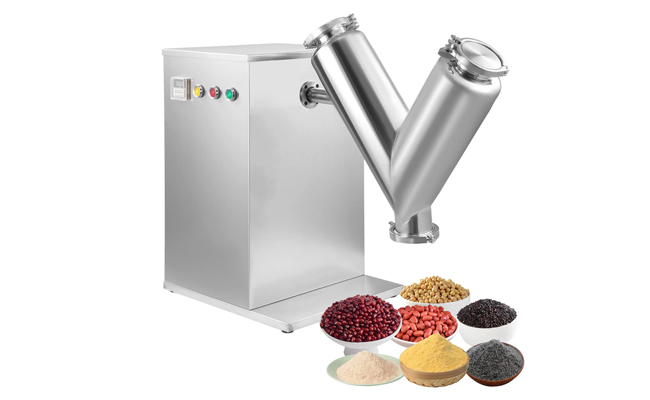BS-460GB Horizontal Band Saw
Cutting Capacity :
Dry powder mixer is an industrial equipment used to mix and stir dry powder materials. It is widely used in chemical, building materials, food, medicine, agriculture and other fields. The following is a detailed introduction to dry powder mixers:

1. Main types
Horizontal dry powder mixer:
It adopts a horizontal cylinder structure with spiral belts or paddles inside, which is suitable for large-scale uniform mixing.
Features: large capacity and high mixing uniformity. It is often used in building materials (such as putty powder, mortar), feed, etc.
Vertical dry powder mixer:
Vertical design, spiral lifting of materials to achieve cyclic mixing.
Features: small footprint, suitable for small batch production, but long mixing time.
Double-shaft paddle mixer:
Strong shear mixing is achieved through high-speed rotating paddles, suitable for materials that are easy to agglomerate or high-precision mixing.
V-type mixer:
Dry powder convection mixing is achieved through the rotation of the V-shaped container, suitable for industries with high uniformity requirements (such as medicine and food).
2. Core structure
Stirring device: spiral belt, paddle, spiral belt-paddle combination, etc.
Drive system: motor, reducer (commonly cycloidal pinwheel or gear reduction).
Cylinder material: carbon steel, stainless steel (304/316, food grade or anti-corrosion requirements).
Auxiliary functions:
Heating/cooling interlayer (special process requirements).
Spraying device (if liquid components need to be added).
Dust removal interface (to prevent dust spillage).
3. Application areas
Building materials industry: putty powder, gypsum powder, tile adhesive, dry mortar, etc.
Food industry: flour, seasoning, milk powder, additive mixing.
Chemical industry: dyes, pigments, plastic particles, pesticide powder.
Medicine/cosmetics: uniform mixing of medicine powder, mask powder, and powder.
4. Selection points
Material characteristics:
Particle size, density difference, fluidity, whether it is sticky.
Capacity requirements:
Select the capacity according to the batch size (such as 500L, 1T, 2T, etc.).
Mixing uniformity:
High-precision mixing requires a paddle or V-type machine, and ordinary mixing can be selected with a screw ribbon.
Special requirements:
Explosion-proof motor (flammable dust), stainless steel material (corrosive materials), sealing (anti-cross contamination).
5. Use and maintenance
Operation precautions:
Feed according to rated capacity (avoid overload).
Start the equipment first and then feed. After mixing, completely empty it and then stop it.
Maintenance:
Check the bearing and reducer lubricating oil regularly.
Clean up residual materials (to prevent agglomeration from affecting the mixing effect).
The belt drive equipment needs to be checked for tightness.
6. Solutions to common problems
Uneven mixing:
Check the blade wear or the order of material feeding (it is recommended to feed a large proportion of raw materials first).
Equipment abnormal noise:
Check for bearing damage or hard impurities in the material.
Dust leakage:
Check whether the sealing strip or dust removal system is working properly.
Cutting Capacity :
Cutting Capacity :